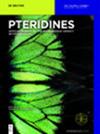Norepinephrine was superior in death risk reducing and hemodynamics compared to dopamine in treatment of patients with septic shock
IF 0.9
4区 医学
Q4 BIOCHEMISTRY & MOLECULAR BIOLOGY
引用次数: 0
Abstract
Abstract Background To investigate the clinical effects of norepinephrine versus dopamine in treatment of septic shock by pooling the data form open published clinical trials. Material and Methods The clinical trials relevant to norepinephrine versus dopamine in treatment of septic shock were electronically searched in the databases of Pubmed, Embase, the Cochrane Library, Web of Science, Google scholar and CNKI. The original data related to the treatment effects such as death risk, oxygen metabolism and hemodynamics index were extracted from the included original studies. The death risk was pooled by the effect size of relative risk (RR), the oxygen metabolism and hemodynamics index were pooled by standard mean difference (SMD) and the corresponding 95% confidence interval (95%CI). The publication bias was evaluated by Begg's funnel plot and Egger's line regression test. Results Thirteen clinical trials were included in the meta-analysis. The pooled results demonstrated the death risk was significantly decreased (RR=0.89, 95%CI:0.81 to 0.98, p=0.024) in septic shock patients who received norepinephrine compared to those receiving dopamine. The HR (SMD=−1.84, 95%CI: −2.86 to −0.81, p<0.01) and cardiac index (SMD=−0.74, 95%CI: −1.01 to −0.48, p<0.01) were lower in norepinephrine group compared to dopamine group. The systemic vascular resistance index (SMD=1.33, 95%CI:0.62 to 2.04, p<0.01) in norepinephrine group was higher than those of dopamine group with statistical difference. The Begg's funnel plot and Egger's line regression test (t=−0.84, p=0.425) showed no publication bias. Conclusions Based on the present evidence, norepinephrine was superior to dopamine in the aspects of death risk reducing and hemodynamics.在脓毒性休克患者的治疗中,去甲肾上腺素在降低死亡风险和血流动力学方面优于多巴胺
背景:通过收集公开发表的临床试验数据,探讨去甲肾上腺素与多巴胺治疗感染性休克的临床效果。材料与方法电子检索Pubmed、Embase、Cochrane Library、Web of Science、谷歌scholar、中国知网等数据库中去甲肾上腺素与多巴胺治疗感染性休克的相关临床试验。从纳入的原始研究中提取与治疗效果相关的原始数据,如死亡风险、氧代谢和血流动力学指标。采用相对危险度效应大小(RR)合并死亡风险,采用标准均差(SMD)和相应的95%可信区间(95% ci)合并氧代谢和血流动力学指标。采用Begg’s漏斗图和Egger’s直线回归检验评价发表偏倚。结果meta分析纳入13项临床试验。综合结果显示,与接受多巴胺治疗的患者相比,接受去甲肾上腺素治疗的脓毒性休克患者的死亡风险显著降低(RR=0.89, 95%CI:0.81至0.98,p=0.024)。去甲肾上腺素组的HR (SMD= - 1.84, 95%CI: - 2.86 ~ - 0.81, p<0.01)和心脏指数(SMD= - 0.74, 95%CI: - 1.01 ~ - 0.48, p<0.01)低于多巴胺组。去甲肾上腺素组全身血管阻力指数(SMD=1.33, 95%CI:0.62 ~ 2.04, p<0.01)高于多巴胺组,差异有统计学意义。Begg's漏斗图和Egger's直线回归检验(t= - 0.84, p=0.425)显示无发表偏倚。结论根据目前的证据,去甲肾上腺素在降低死亡风险和血流动力学方面优于多巴胺。
本文章由计算机程序翻译,如有差异,请以英文原文为准。
求助全文
约1分钟内获得全文
求助全文
来源期刊

Pteridines
生物-生化与分子生物学
CiteScore
1.20
自引率
25.00%
发文量
6
审稿时长
>12 weeks
期刊介绍:
Pteridines is an open acess international quarterly journal dealing with all aspects of pteridine research. Pteridines are heterocyclic fused ring compounds involved in a wide range of biological functions from the color on butterfly wings to cofactors in enzyme catalysis to essential vitamins. Of the pteridines, 5,6,7,8-tetrahydrobiopterin is the necessary cofactor of several aromatic amino acid monoxygenases, the nitric oxide synthases and glyceryl ether monoxygenase (GEMO). Neopterin plays an essential role in the immune system and is an important biomarker in laboratory medicine for diseases such as HIV, cardiovascular disease, malignant tumors, among others.
Topics:
-Neopterin, dihydroneopterin, monapterin-
Biopterin, tetrahydrobiopterin-
Folates, antifolates, riboflavin-
Phenylalanine, tyrosine, phenylketonuria, serotonin, adrenalin, noradrenalin, L-DOPA, dopamine, related biogenic amines-
Phenylalanine hydroxylase, tyrosine hydroxylase, tryptophan hydroxylase, nitric oxide synthases (iNOS), alkylglycerol monooxygenase (AGMO), dihydropterin reductase, sepiapterin reductase-
Homocysteine, mediators of inflammation, redox systems, iron.
 求助内容:
求助内容: 应助结果提醒方式:
应助结果提醒方式:


